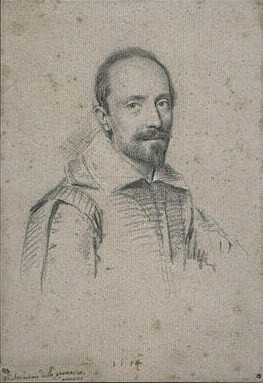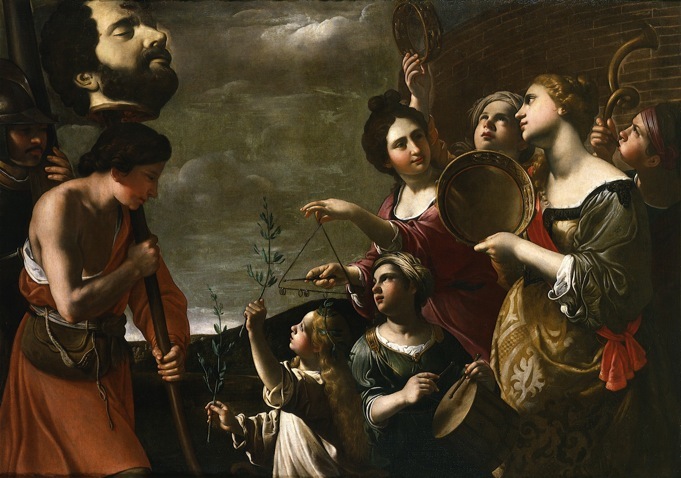Antiveduto Grammatica on:
[Wikipedia]
[Google]
[Amazon]

 Antiveduto Grammatica (1571 – April 1626) was a proto- Baroque Italian painter, active near Rome.
Grammatica was born in either
Antiveduto Grammatica (1571 – April 1626) was a proto- Baroque Italian painter, active near Rome.
Grammatica was born in either
''Orazio and Artemisia Gentileschi''
a fully digitized exhibition catalog from The Metropolitan Museum of Art Libraries, which contains material on Antiveduto Grammatica (see index) {{DEFAULTSORT:Grammatica, Antiveduto 1571 births 1626 deaths Italian Baroque painters 16th-century Italian painters Italian male painters 17th-century Italian painters

 Antiveduto Grammatica (1571 – April 1626) was a proto- Baroque Italian painter, active near Rome.
Grammatica was born in either
Antiveduto Grammatica (1571 – April 1626) was a proto- Baroque Italian painter, active near Rome.
Grammatica was born in either Siena
Siena ( , ; lat, Sena Iulia) is a city in Tuscany, Italy. It is the capital of the province of Siena.
The city is historically linked to commercial and banking activities, having been a major banking center until the 13th and 14th centur ...
or Rome. According to Giovanni Baglione
Giovanni Baglione (1566 – 30 December 1643) was an Italian Late Mannerist and Early Baroque painter and art historian. He is best remembered for his acrimonious and damaging involvement with the slightly younger artist Caravaggio and ...
the artist was given the name Antiveduto ("foreseen") because his father had a premonition that he would soon be born during a journey between his native Siena and Rome. It was in Rome that Antiveduto was baptised, raised and based his career. His apprenticeship with the Perugian artist Giovanni Domenico Angelini (Giandomenico Perugino) introduced him to small-scale work, mostly on copper. He gained the nickname "gran Capocciante" because he specialised in painting heads of famous men. A decade later, in 1591, Antiveduto set up as an independent artist.
Grammatica's earliest surviving public commission, an old-fashioned configuration depicting ''Christ the Saviour with St. Stanislaus of Krakow, St. Adalbert of Prague and St Hyacinth Odrowaz'', was painted for the high altar of Santo Stanislao dei Polacchi. Characterized by Giulio Mancini as most zealous in his profession, Antiveduto began his association with the Accademia di San Luca
The Accademia di San Luca (the "Academy of Saint Luke") is an Italian academy of artists in Rome. The establishment of the Accademia de i Pittori e Scultori di Roma was approved by papal brief in 1577, and in 1593 Federico Zuccari became its fi ...
in 1593. He gained great familiarity with the two protectors of the Academy, Cardinals Federico Borromeo
Federico Borromeo (18 August 1564 – 21 September 1631) was an Italian cardinal and Archbishop of Milan, a prominent figure of Counter-Reformation Italy.
Early life
Federico Borromeo was born in Milan as the second son of Giulio Cesare Borrom ...
and Francesco Maria Del Monte
Francesco Maria del Monte, full name Francesco Maria Bourbon del Monte Santa Maria, (5 July 1549 – 27 August 1627) was an Italian Cardinal, diplomat, and connoisseur of the arts. His fame today rests on his early patronage of the important Bar ...
, and was closely attached to the latter; so much that he was elected to the highest office of the association as "principe" in 1624. Shortly after this, however, he became embroiled in scandal. The machinations of Grammatica’s enemy Tommaso Salini over the attempt to sell off the Accademia's altarpiece, thought to be by Raphael
Raffaello Sanzio da Urbino, better known as Raphael (; or ; March 28 or April 6, 1483April 6, 1520), was an Italian painter and architect of the High Renaissance. His work is admired for its clarity of form, ease of composition, and visual a ...
, brought about a humiliating retreat, when Cardinal Del Monte intervened to re-establish the constitution of the institution. His fortunes were in a way linked with the Cardinal himself, who was much frowned upon by the Barberini
The House of Barberini are a family of the Italian nobility that rose to prominence in 17th century Rome. Their influence peaked with the election of Cardinal Maffeo Barberini to the papal throne in 1623, as Pope Urban VIII. Their urban palace ...
, and his death preceded that of Del Monte by four months, in April 1626.
His works are exhibited in numerous public collections, including the State Hermitage Museum - St Petersburg, the Museo Nacional del Prado – Madrid,
the Kunsthistorisches Museum, Vienna, the Muzeul Naţional Brukenthal - Sibiu/Hermannstadt, Romania, the Kelvingrove Art Gallery and Museum – Glasgow,
and the Maison D’Art Gallery, Monaco.
References
Further reading
*Gianni Papi, ''Antiveduto Grammatica'', Soncino 1995 *Kathryn Bosi Monteath, “6. Antiveduto Gramatica: Saint Cecilia with two angels. Portrayed instruments”, "Marvels of sound and beauty" : Italian Baroque musical instruments, catalogue of the exhibition Florence, 12 June-4 November 207, Florence, Giunti, 2007, pp. 146–47 *Helmut Philipp Riedl, ''Antiveduto della Grammatica (1570/1-1626) Lebun und Werk'', Berlin 1998 *Antonella Triponi, ''Antiveduto Grammatica. Una disputa del primo Seicento romano: nuovi documenti'' Storia dell'Arte 103 *Gianni Papi, '' Aggiornamenti per Antiveduto Gramatica'', Arte Cristinana Marzo-Aprile 2003, 815 pp. 117–124 *Massimo Pulini, '' Il fossombrone ritrattista degli oratoriani. La racolta Mattei e Antiveduto Gramatica'' Paragone Marzo 2005 pp. 31–39 *Giovanni Baglione, Le vite de' pittori scultori et architetti. Dal pontificato di Gregorio 13. del 1572. In fino a' tempi di papa Vrbano ottauo nel 1642, Roma, stamperia d'Andrea Fei, 1642, pp. 294–295, SBN IT\ICCU\NAPE\011153. *Alberto Macchi, L'uomo Caravaggio - atto unico / prefazione di Stefania Macioce, AETAS, Roma 1995,External links
''Orazio and Artemisia Gentileschi''
a fully digitized exhibition catalog from The Metropolitan Museum of Art Libraries, which contains material on Antiveduto Grammatica (see index) {{DEFAULTSORT:Grammatica, Antiveduto 1571 births 1626 deaths Italian Baroque painters 16th-century Italian painters Italian male painters 17th-century Italian painters